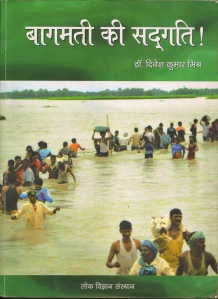/regions/bihar
Bihar
Caste discrimination in disaster situations in India - Reports by National Dalit Watch
Posted on 21 Sep, 2012 11:00 AMThe National Dalit Watch (NDW), an effort spearheaded by the National Campaign on Dalit Human Rights has prepared a number of reports on rampant caste discrimination and the urgent need for protection of human rights, particularly Dalit human rights during disaster situations.
"Crop failure resulting from failed monsoon drives farmers to suicide in Saurashtra" - Roundup of the week's news (20-26 August 2012)
Posted on 28 Aug, 2012 11:57 AMNear complete crop-failure drives farmers to suicide in Saurashtra, Gujarat
Multiple stocking and multiple harvesting - A useful concept for surplus water in states like Bihar, Uttar Pradesh, West Bengal
Posted on 24 Aug, 2012 07:43 PMIn this system, stocking density is high, maximum being 12000 nos./ha.. The pond is prepared in the same way as in the case of composite fish farming. No extra management works are necessary. However, anursery pond is a prerequisite in the system. Fish culture is done continuously for 3 years, wherein harvesting and restocking starts right from the 4th month of stocking.
Dug wells- A potentially safe source of drinking water for the arsenic and iron contaminated region of Bihar - A paper by Megh Pyne Abhiyan (MPA)
Posted on 03 Aug, 2012 01:00 PMThis paper published by Megh Pyne Abhiyan argues that dug wells slowly started losing their significance following the invention and large scale marketing of hand pumps,.
"Taral Darpane Samajer Mukh" by Joya Mitra – Bengali translation of Anupam Mishra's booklet "Tairne Wala Samaj Doob Raha Hai" on floods in Bihar
Posted on 21 Jul, 2012 04:19 PM
The second edition of the book came out in 2008 just after the devastating Bihar floods in the year when the river thundered down from the Himalayas on its way to the sea sweeping half of Bihar.
Understanding the floods of Bihar - Book review of "Bagmati Ki Sadgati !"
Posted on 14 Jul, 2012 10:28 AM Bagmati Ki Sadgati! by Dr.
Bagmati Ki Sadgati! by Dr.
Future at stake - The dismal picture of education in Bihar and efforts to revive it
Posted on 18 Jun, 2012 04:22 PM“The current age is the era of knowledge and not of weapons, and only through education and knowledge can one break out of the abject poverty”. Wise words from Bihar’s Chief Minister Nitish Kumar, who believes that times have changed since his government took over: now is the time to pick up the pen and discover its power.
Bihar floods - Causes and preventive measures
Posted on 01 Jun, 2012 12:21 PMBihar is surrounded by Nepal in the north, West Bengal in the east, Uttar Pradesh in the west and Jharkhand towards the south. There are several rivers that run through the state: Ganga, Sone, Punpun, Falgu, Karmanasa, Durgavati, Kosi, Gandak and the Ghaghara, to name a few. Nearly 85% of the state’s land is under cultivation.
WaterAid India invite applications for program officer, Lucknow, Apply by June 1, 2012
Posted on 28 May, 2012 11:25 PMContent courtesy: DevNet Jobs
![]()
WaterAid is an international nongovernmental organisation focused exclusively on improving poor people’s access to safe water, improved hygiene and sanitation in developing countries. WaterAid is an equal opportunities employer.
Job description:
The post holder, reporting to the Regional Manager is responsible to develop and manage the delivery of WAI programme in the state, promote and develop partnerships, ensuring high quality sustainable work - safe water, sanitation and hygiene as rights - efficiently, economically and effectively and in a manner consistent with WaterAid’s strategy, values and approach. The states programme is in a very exciting stage, the Programme Officer is responsible for monitoring of programme and budget of WaterAid’s work in the state. Will support advocacy and networking in the state/region and be constantly updated on the sector developments. Regularly engage with partners, sector players, local governments and other institutions and support their capacity building.